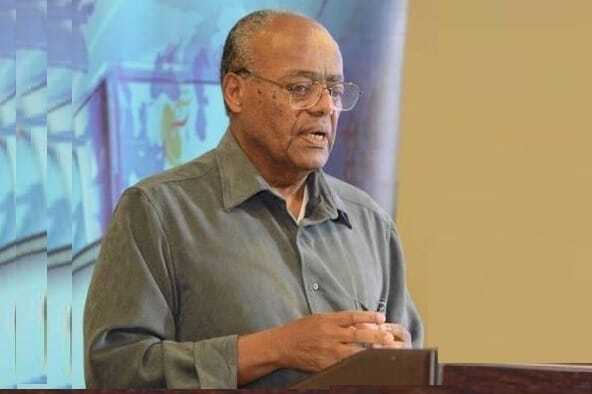The effectiveness of Conference of Parties (COPs) should not be gauged solely by immediate, tangible outcomes but by the ripple effects they create in shaping the global discourse and indirectly influencing policy and innovation in the pursuit of a sustainable future, writes Geoffrey Heal, a professor of social enterprise at Columbia Business School, in this commentary provided by Project Syndicate (PS).
COP season is almost here. For the climate-conscious, the annual Conference of Parties of the United Nations Framework Convention on Climate Change (UNFCCC) is a fixture of the late-year calendar and an opportunity to take stock of our goals, needs, and achievements. We spend two weeks preoccupied with a distant event, hoping that negotiators will make meaningful progress toward mitigating the climate threat.
But to keep our expectations for COP28 realistic, we must understand what a COP can and cannot do.
We are steadily decarbonising our economies. Within a decade, wind and solar power will be the major sources of electricity, and sales of electric vehicles (EVs) are likely to overtake those with internal combustion engines. According to the International Energy Agency (IEA), fossil fuel consumption will begin to fall by 2030. Though this is probably too late to limit the global temperature increase to two degrees Celsius, let alone 1.5°C, above pre-industrial levels, it is sooner than one would have expected only a short time ago.
But little of this progress is directly attributable to COPs, including COP21 in 2015, from which the Paris climate agreement emerged. The Paris Agreement specifies nothing about EVs or wind or solar power. Instead, it is Tesla responsible for the growth of EV sales: the commercial success of the company’s Model S drove other high-end automakers to develop the competitive products now debuting.
Is there any connection between COPs and Tesla’s success?
If there is, it is not direct. During its early growth stages, Tesla benefited greatly from the United States’ Corporate Average Fuel Economy (CAFE) regulations, which enabled it to sell zero-emissions credits to other manufacturers. The revenues from ZEC sales sometimes surpass those of car sales.
The CAFE regulations date back to 1975, two decades before the first COP. They have, however, been tightened over time, a process that might partly reflect increased awareness, fostered by the COPs, of the climate challenge. Similarly, the COPs might have encouraged the subsidies in the US and the European Union, from which Tesla has benefited more recently, after it had already become a significant force in the auto industry.
As for solar and wind, the sharp cost decline has driven their dramatic growth. From 2009 to 2019, the cost of solar power fell from 0.36 dollars for a kilowatt-hour to 0.03 dollars. This decline is attributable to two main factors: economies of scale, which lowered the costs of producing each silicon wafer, and learning by doing, which led to more efficient – and thus cheaper – manufacturing processes. Both factors sustain a virtuous cycle: as the use of solar power increases, costs come down, further accelerating the adoption of solar power.
Germany’s adoption of generous feed-in tariffs for solar power started this process in 2000. The Chinese government subsequently began investing heavily in solar, which it identified as a strategically important industry. Again, these essential policy moves could have been encouraged by the increased awareness of climate change they generate at COP meetings.
For offshore wind, the cost decline has been driven mainly by Orsted and Equinor, two Scandinavian companies that leveraged their offshore oil and gas expertise to develop offshore wind farms using many of the same technologies. Government subsidies helped the nascent technology to become commercially viable.
Progress on decarbonisation has primarily reflected technological breakthroughs by for-profit ventures with the help and guidance of supportive government policies. Those policies might have been crystallised by the discussions and publicity surrounding the COPs. However, they were not the result of specific directives from those meetings or contained in the Paris Agreement.
What should we hope emerges from COP28?
COPs can produce two types of positive outcomes. The first are “big picture” outcomes, such as maintaining pressure on governments and corporations to reduce emissions. Here, it is crucial not only to reiterate the importance of reaching zero emissions and highlighting how far we have yet to go but also to recognise the progress that has already been made. The second type of outcome is more granular. This year’s COP must begin a process to clarify what constitutes a valid carbon offset.
Many corporations expect to reduce, but not eliminate, their emissions, assuming they can buy carbon offsets to take them to net zero. But the world obviously cannot reach zero emissions – the ultimate goal – if anyone is still emitting.
Equally important, it has become clear that many voluntary carbon offsets are worthless, as they do not meet the standard of additionality (the guarantee that the relevant emissions reductions would not have occurred without support from carbon credit sales) or avoid leakage (shifting emissions elsewhere). An international body must set clear standards for the validity of offsets and impose limits on their use, and the UNFCCC is the obvious candidate.
COP28 can potentially encourage further climate action, including introducing or strengthening policies that can lead to emissions-reducing technological breakthroughs, as well as deliver a much-needed rulebook on critical technical issues, such as offsets. Whether it succeeds depends entirely on execution.
PUBLISHED ON
Oct 21,2023 [ VOL
24 , NO
1225]










